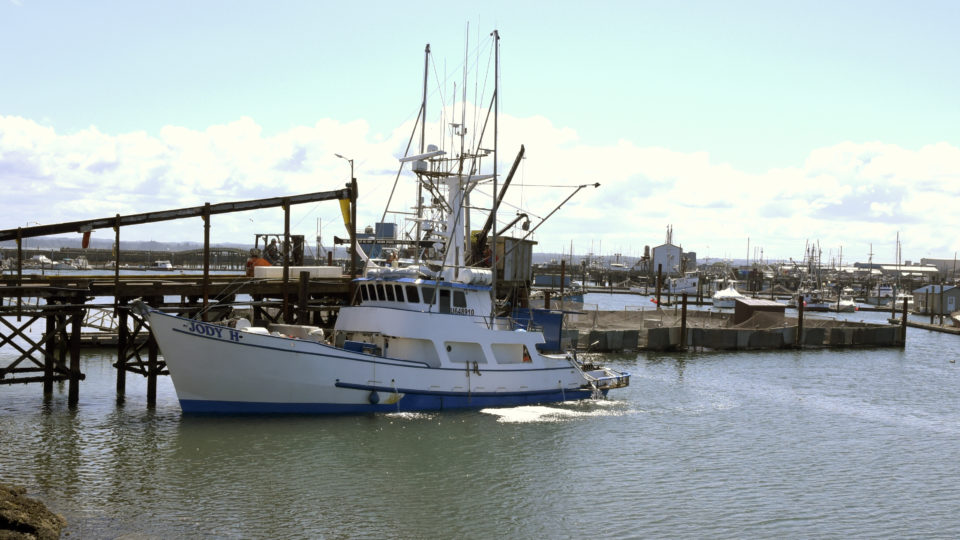
Jodi H is a commercial albacore fishing vessel based in San Diego, California. She is one of the many California and Oregon boats that make Westport their port of call during the summer tuna season.
Imagine a fish that can push 50 pounds and smash into your line at upwards of 40 mph. That’s the albacore tuna.
Westport is one of the premier destinations on the Pacific Coast for those who hunt these blue and silver bullets, prized for their fight and for their sweet, mild flesh. The albacore fishery there draws a lot of interest from commercial and recreational fishermen alike.
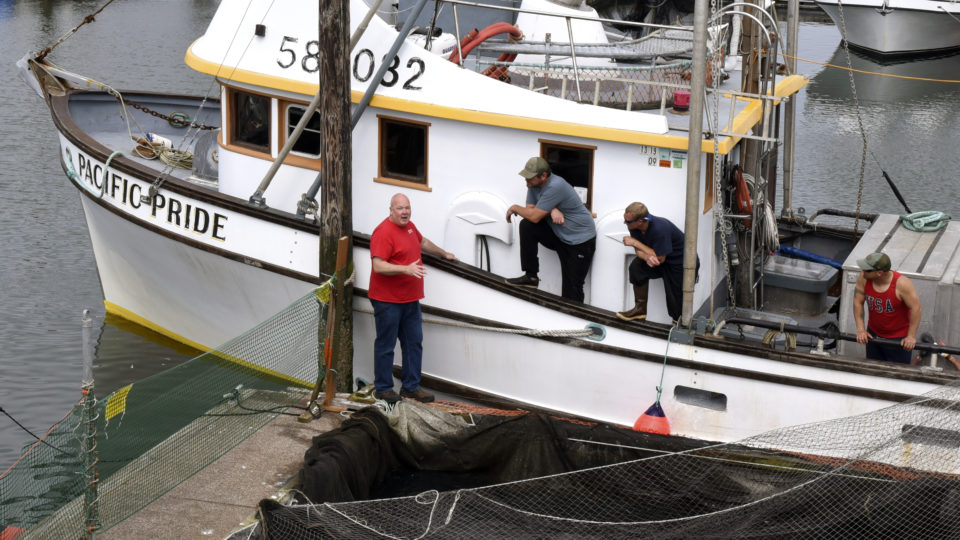
Michael Cornman of Westport Seafood Inc., left, talks to the crew of the Westport commercial fishing vessel Pacific Pride as it docks next to the net pens that hold live anchovies – the bait favored by commercial and sport tuna fishermen.
For Mike Cornman and the crew at Westport Seafood Inc., things start getting serious in May, when the bait fish arrive.
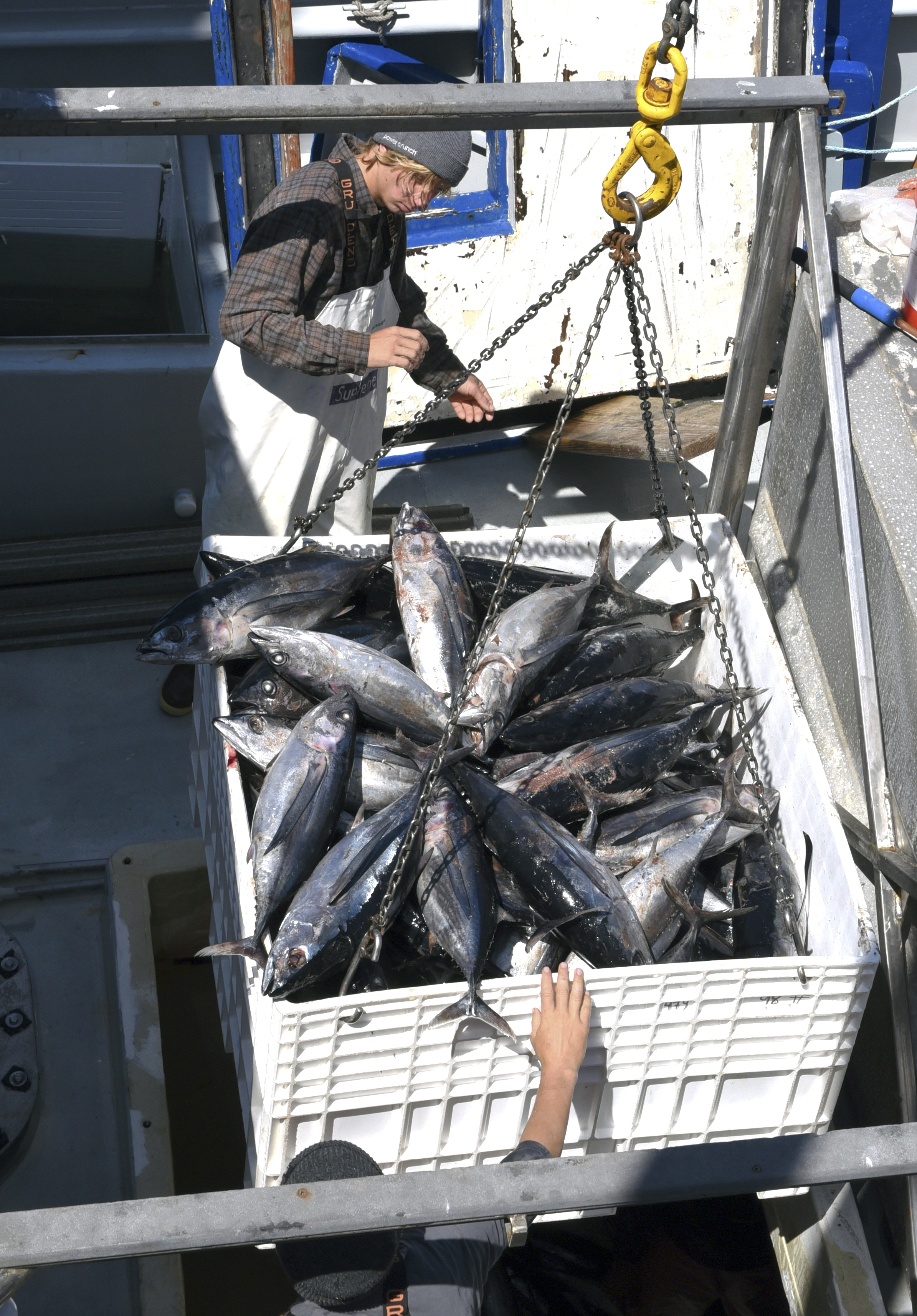
Last year, 4,161 metric tons of commercially caught albacore tuna were brought into Washington ports—about 70% of it to Westport, according to the Washington State Department of Fish and Wildlife. Landings have varied over the past 10 years, from that relatively low 2018 catch to a high of 8,774 metric tons in 2012.
“We usually start catching anchovies around mid-May, pretty much exclusively inside Grays Harbor,” said Cornman. “You’ll see, out in front of Westport and up into the bay toward the (local) airport, fishing pretty much seven days a week.”
Anchovies support the area’s albacore industry; both commercial and recreational fishermen rely on Westport Seafood for their supply. The 4- to 8-inch fish are caught by seine net, then boats bring them into Westport Marina and move them into large net pens.
“In the peak of the season, we have 27 pens we store live anchovies in,” said Cornman. “The boats come in, and we load the anchovies in live.”
Timing
The best time to catch albacore can vary by a few weeks every year.
“Albacore are highly migratory,” said Cornman. What Westport fishermen are looking for is when the fleet-finned fish get within striking distance of the marina – within 100 or so miles of the coast.
“Typically it starts in mid- to late July, and the peak season goes through August, September and sometimes into October,” he said. “There can be several weeks’ difference from year to year.”
Albacore is a highly targeted species, meaning young fish – the 4- to 6-year-olds – can easily be caught feeding near the surface while the older, breeding-age fish are doing their business “somewhere on the bottom of the ocean.” Just where, nobody knows; but fishermen are just fine targeting the ones up top.
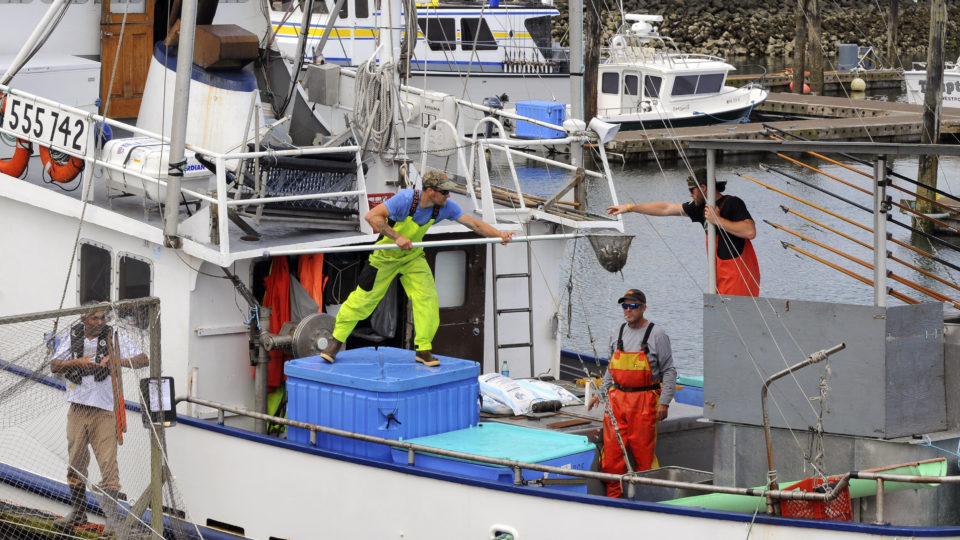
The Newport, Oregon-based commercial tuna vessel Tempo picks up live anchovies at Westport Seafood Inc. on its way out to look for albacore. Commercially caught albacore are taken with live anchovies and a simple pole and line setup, and the action can be intense.
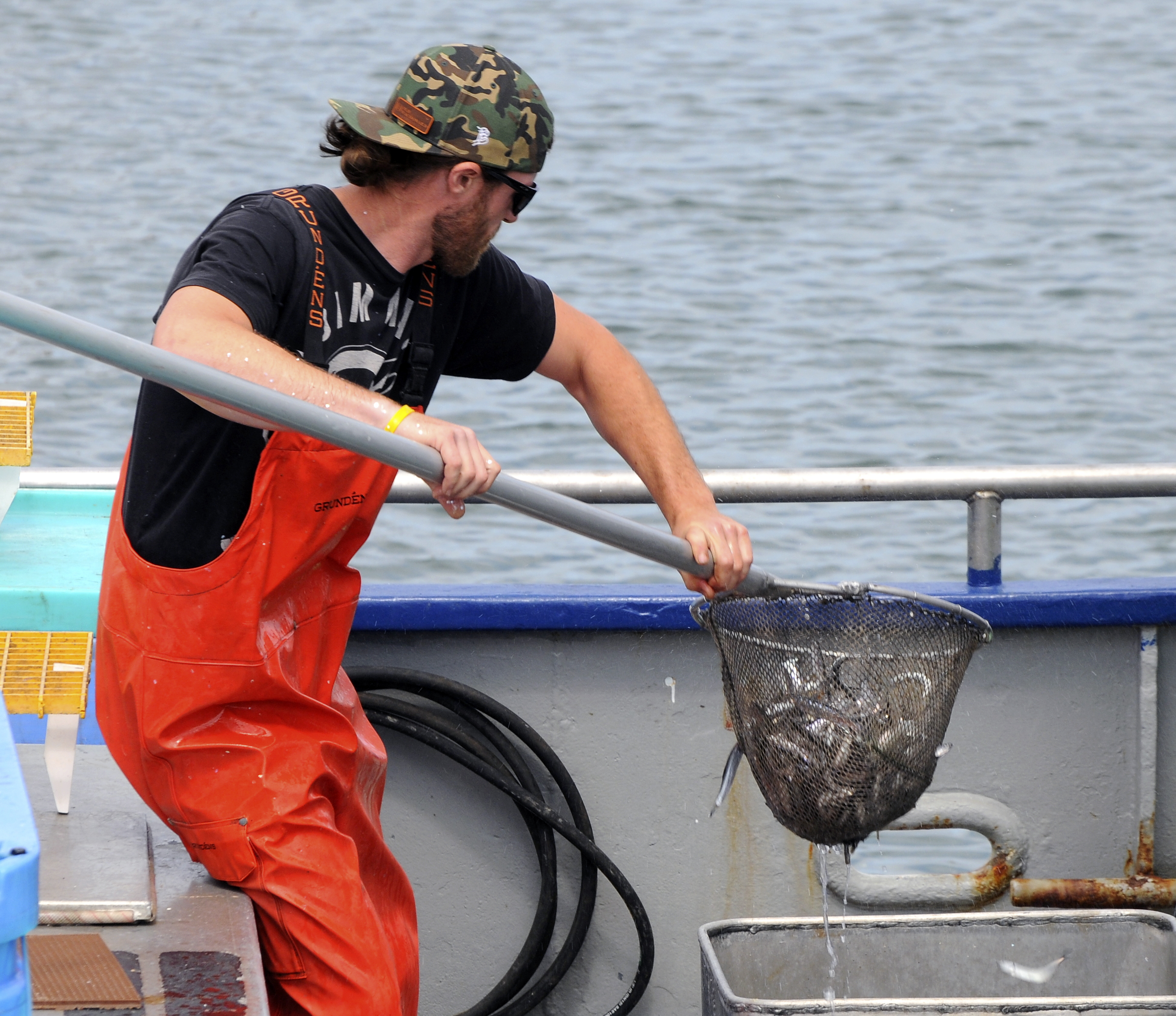
A Tempo crew member puts live anchovies in the vessel’s well to be used as bait for albacore tuna. Westport Seafood Inc. has its own vessel to net the live anchovies, and 27 netpens to store them for commercial and sport anglers.
It’s considered an open-access fishery for both commercial and recreational fishermen because it is so closely targeted. There is no season – no open date, no closing date – and there is no limit on how many fish can be caught beyond a boat’s capability, size and range.
Both types of fishermen use a hook and line. There’s no bycatch – the term used for fish that become casualties of the hunt for targeted species. When you’re in the albacore, you’re in them, and you’re not likely to see anything else hit the deck of the boat.
The fishing can be pretty intense. When you come up on a school of albacore, there may be hundreds of them – all focused on food. A live anchovy on a hook skipped near the surface is like popcorn to them, and the action can get downright crazy.
Commercial fishing
Search “Westport tuna fishing videos” online and you’ll come across footage that will make your arms ache just watching it. Commercial anglers use a stout pole with a fixed line. For hours at a time, these commercial fishermen will fling out an anchovy, hook a fish and fling it over their heads onto the deck of the boat. This can happen several times in a single minute. And it’s all done with muscle, no reel at all.
A commercial boat can spend up to a month on the water, depending on the number of fish available and the size of the vessel.
“A vessel may deliver 20 to 60 or even 80 tons of albacore per trip, based on the size of the vessel,” said Cornman.
The Westport albacore fishery and its processors draw boats from all up and down the Pacific Coast.
“Lots of boats come out of San Diego; there’s a big fleet there,” said Cornman. Others will travel from Northern California ports, and vessels from Crescent City, Brookings, Newport and elsewhere in Oregon also get in on the action here.
And for good reason.
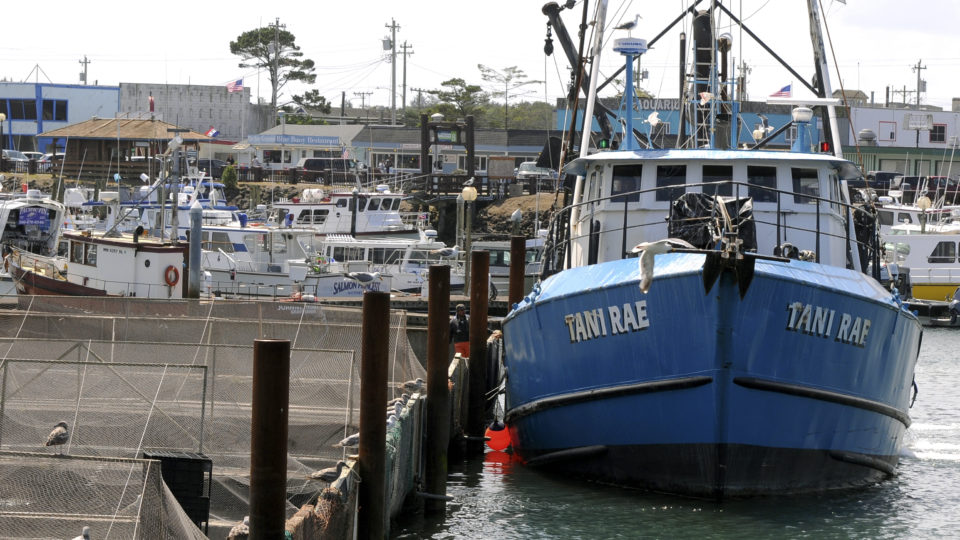
Starting in mid-May, you’ll see Westport Seafood Inc.’s vessel Tani Rae seining anchovies inside Grays Harbor. Westport Seafood is the largest supplier of live anchovies for tuna boats in the region.
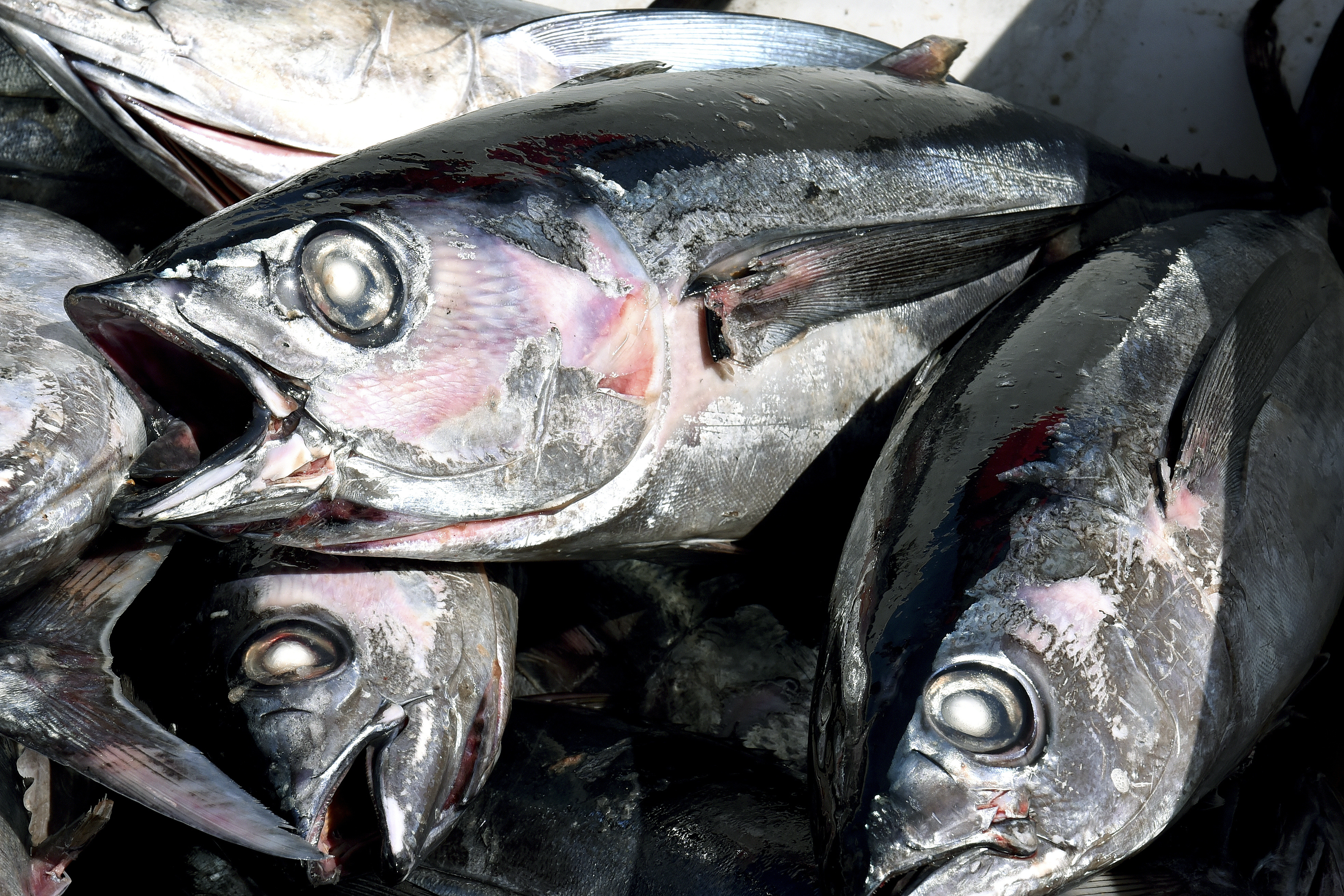
“A vessel may deliver 20 to 60 or even 80 tons of albacore per trip, based on the size of the vessel.” — Michael Cornman President, Westport Seafood Inc. the size of the vessel.”
— Michael Cornman
President, Westport Seafood Inc.
“I would estimate about 70% of the North Pacific albacore catch annually comes through Westport,” said Cornman.
According to the Washington State Department of Fish and Wildlife, commercial albacore tuna landings in the state have varied over the past decade, from a low of 4,161 metric tons in 2018 to a high of 8,774 metric tons in 2012. About 200 to 300 vessels land albacore into Washington ports each year, with the majority coming into Westport, followed by the ports of Ilwaco and Chinook to the south.
About 97% of the commercial catch is frozen at sea, said Cornman. It’s packed in Westport and trucked to the ports of Seattle and Tacoma for overseas processing. When the fish are caught close enough to land, fresh albacore may be available at the docks – and at Merino’s Seafood, which also cans a variety of albacore products in Westport.
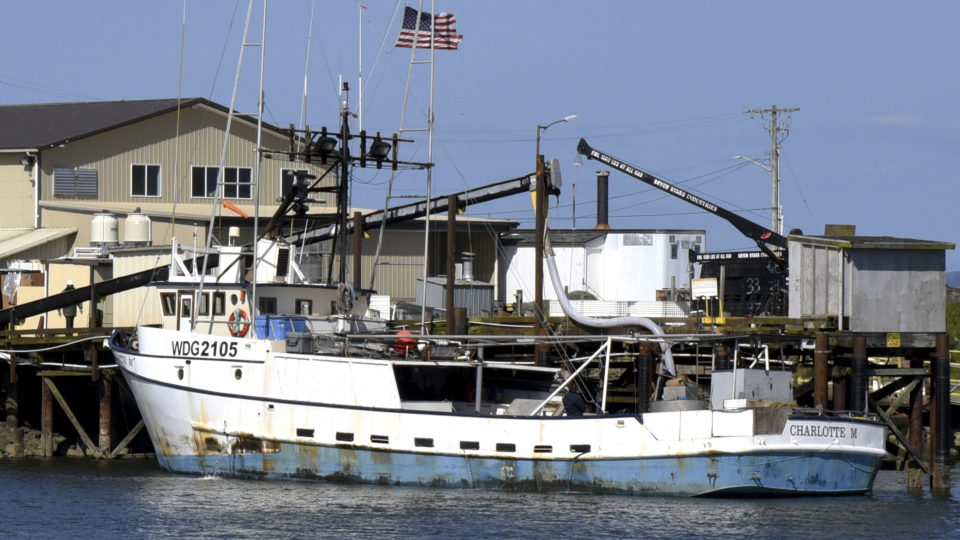
Charlotte M is a California-based commercial tuna vessel. It’s pictured here dropping off a load of frozen albacore at Westport Marina for distribution primarily overseas.
Sport fishing
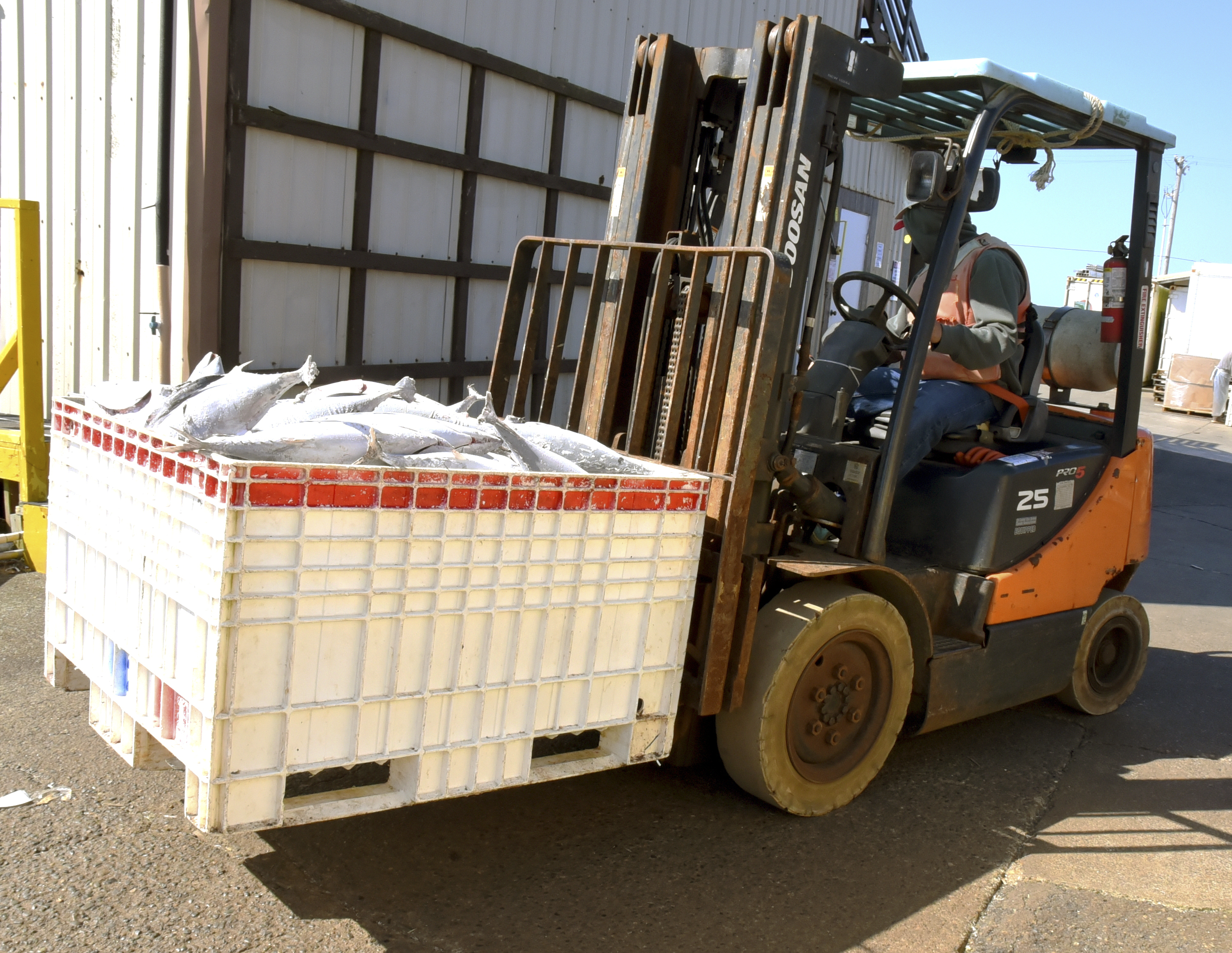
Commercially caught albacore tuna are frozen at sea for transport to Westport.
Sport fishing trips for albacore are broken into two types. There are the smaller boats, equipped to take up to six or so clients on a single day trip. These boats are equipped with up to three large outboard motors, allowing them to zip 80 to 100 miles offshore, spend plenty of time there fishing, then return before dark on the same day.
Then there are what most would consider a typical charter boat: a much larger vessel with inboard motors and the capacity for up to 15 people. These trips can range from one to two nights, depending on how far out the albacore are. Often these larger boats will run out at night, the clients fish all day, then return to the dock the following night.
As with commercial fishing, things can get hectic on deck. When you’re into a lot of fish, it’s not unusual to have the majority of rods hooked up at the same time, with each individual angler playing a sort of leap-frog with other anglers along the rail, trying to haul in a strong fish without tangling up the lines.
To book an albacore adventure, check out the Westport Charterboat Association at charterwestport.com. There are 20 charter boats in the association, with links to each on the website. Outside of that group, type “Westport albacore” into your favorite search engine to find others.
A typical tuna charter trip will run about $425 per angler.
Before you head out on the water, be sure to purchase a Westport Charterboat Association derby ticket from any of the charter offices that dot the Marina. The weekly prize for the largest albacore is up to $400, and there is $1,000 up for grabs for the largest of the season – but if you catch The Big One and you don’t have a derby ticket, you’re out of luck.